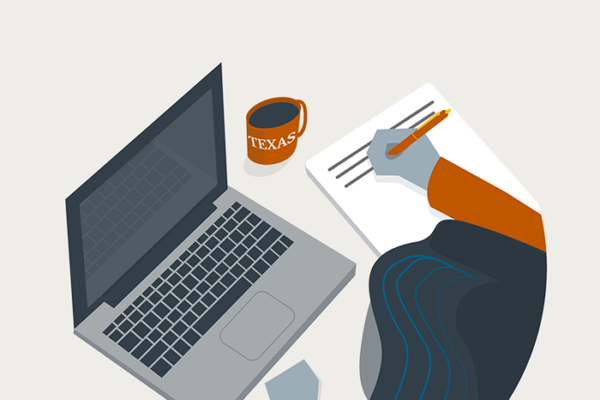There is increasing criticism of universities for not lowering tuition for going online. The argument is that online education is cheaper, inferior and less valuable. This is not the case, and certainly not where I work in the McCombs School of Business at The University of Texas at Austin.
In my 25 years of teaching and now leading the transition to remote learning in my school, I have never seen the commitment and coming together of faculty with a sole mission to provide the best learning experience to students. Irrespective of rank and reputation, a large majority of the 250 full-time and part-time faculty members have come together to share their experiences, bring best practices, learn from one another, practice together and be there for one another for only one purpose — the best learning experience and outcome for our students.
We’ve run 30 workshops in the past five months, and some sessions have been attended by nearly 200 faculty members. Some who have 30-plus years of experience exclaimed that they had never seen such coming together to discuss only teaching in a research university. They learned how to teach online using Zoom, engage students with tools and be inclusive in teaching.
When the university announced hybrid or dual-mode classes where some students are in a classroom and some at remote locations, we upgraded 60 classrooms to enable such teaching. We needed to upgrade room technology to integrate room camera, Zoom, document camera and projector. We needed cameras that followed faculty members as they moved around in class. We needed massive monitors for faculty to see remote students in front of them. We realized that when a teacher wrote on a board, that wasn’t visible to remote students. Therefore, every faculty member was equipped with an iPad or touch-screen laptop for writing so students in the classroom and remote locations could easily see what was written. Room sound systems allowed seamless interactions between class and remote students.
I have personally seen world-class researchers testing classroom technology with their family members to see how it works and how to engage students in class and in remote locations. All these changes cost money, and it takes enormous time to learn, test, practice and plan.
It is true that professors can do some things better online than in a face-to-face environment. For example, many faculty members realize that they can record the basics of the class material to allow students to learn on their own and then dedicate class time to problem-solving and higher order thinking. These are often referred to as flipped classrooms. Students can rewind and learn material, matching their learning speed. Many times in the past, efforts to encourage faculty members to move to flip the classroom environment was met with resistance or with little support.
Faculty members have also realized that student interactions during office hours have gone up since students can engage with professors easily from home. Some senior faculty members who never believed in online learning now express that they will be adopting some things that may actually enhance learning.
There is no doubt that online learning reduces social bonding and the learning experience, but the criticism that the quality of an online education is lower is not genuine. It is certainly not the case at UT Austin or the McCombs School of Business, where the school has invested heavily to upgrade facilities and the faculty are deeply committed to providing students with the best experience. In fact, with experience and the faculty’s commitment to keeping students’ interest at the heart, the quality of learning may actually go up.
Prabhudev Konana is the associate dean of instructional innovation in the McCombs School of Business at The University of Texas at Austin.
A version of this op-ed appeared in the Austin American-Statesman and the Abilene Reporter News.




